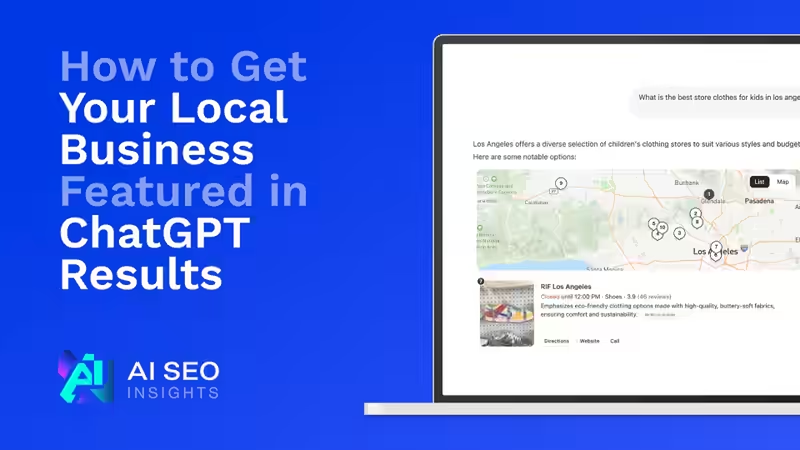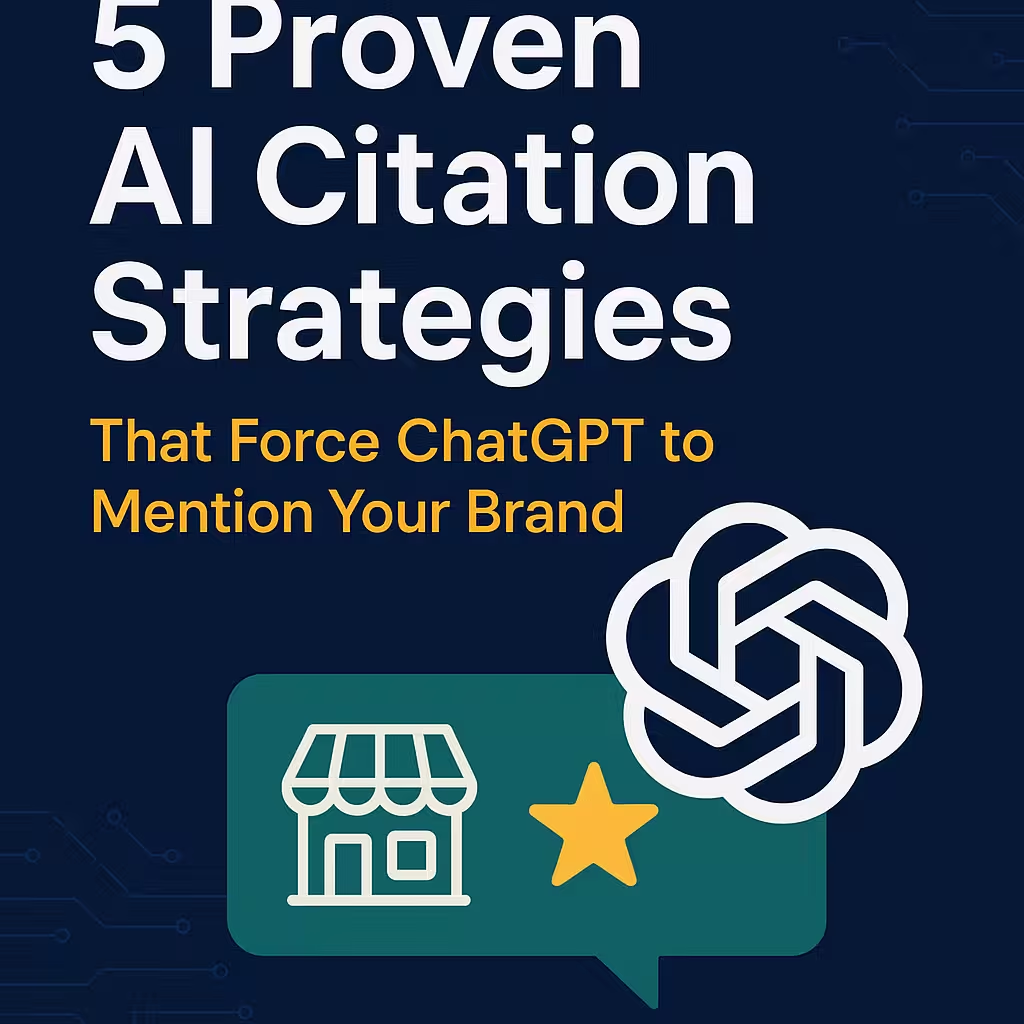Local Business ChatGPT Guide

How to Get Your Local Business Featured in ChatGPT Results
Wondering how to get your local business—like a kids’ clothing store in Los Angeles—to appear in ChatGPT answers? You’ve probably seen AI-generated results that show maps, store cards, hours, and reviews. This guide shows you exactly how to make that happen.
Why Local Businesses Appear in ChatGPT
ChatGPT uses Bing’s index and local data sources to answer location-based questions. It doesn’t crawl your site directly. Instead, it pulls from:
- 🗺️ Bing Places
- 📝 Local schema markup
- 🗂️ Directory listings (e.g., Yelp, Yellow Pages, Google Maps)
- ⭐ Reviews and public info
That means local SEO is your ticket to being featured in ChatGPT answers like:
“What’s the best kids’ clothing store in Los Angeles?”
Step-by-Step: How to Appear in ChatGPT Local Results
1. 📍 Claim and Optimize Your Bing Places Listing
ChatGPT pulls store details like address, hours, and reviews directly from Bing.
- Go to Bing Places for Business ↗
- Add your:
- Store name
- Address & phone (match your website)
- Business hours
- Website & images
- Categories (e.g., “Children’s Clothing Store”)
2. 🏷️ Add Local Schema Markup to Your Website
Use LocalBusiness ↗ schema to tell AI exactly what your business is about.
Key Properties to Include:
@type: “ClothingStore” or “LocalBusiness”name,address,telephonegeo: latitude and longitudeopeningHourssameAs: links to Yelp, Google Maps, etc.
💡 Use tools like Schema Markup Generator ↗ to make this easy.
3. ⭐ Get Reviews on Major Platforms
Reviews impact visibility in ChatGPT via Bing.
- Focus on Google, Bing, and Yelp
- Ask customers to mention what they bought and where you’re located
- Respond to reviews to build trust
4. 🗂️ List Your Business in Trusted Directories
ChatGPT values consistency and credibility.
Make sure your store is listed in:
- Yelp
- Yellow Pages
- Google Business Profile
- Apple Maps
- Facebook Business
✔️ Your NAP (Name, Address, Phone) should be identical across all platforms.
5. 📸 Add High-Quality Visuals
AI tools favor listings with rich, accurate info.
- Use real product photos (e.g., kids’ outfits)
- Add interior and exterior shots
- Upload images to Bing Places and your website
6. ✍️ Use Location-Based Keywords in Your Content
Even on your website and blog, reinforce where you are and what you offer.
Examples:
- “Eco-friendly kids’ clothing in Silver Lake, LA”
- “Best boutique for toddler clothes in Los Angeles”
This reinforces your relevance to AI-driven search intent.
Example: Ranking a Kids’ Clothing Store in LA
Let’s say you own Sunny Tots Boutique in Glendale, CA.
- You claim your Bing Places listing and add great photos.
- You install LocalBusiness schema on your site.
- You gather a few reviews on Yelp and Google.
- Now, someone asks ChatGPT:
“Where can I buy sustainable kids’ clothes near Glendale?”
- ChatGPT includes Sunny Tots Boutique in its map-based answer, complete with hours, rating, and eco-friendly mention.
🎉 That’s how you win the local AI search game.
Bonus Tips
- 🔁 Keep info updated: ChatGPT pulls fresh data from Bing and directories.
- 📈 Track performance: Monitor traffic from Bing and search tools.
- 🧠 Combine with AI SEO: For broader visibility beyond local intent, read our AI SEO Guide.
Final Thoughts
Getting featured in ChatGPT isn’t magic—it’s smart local SEO combined with structured data and visibility on Bing. Whether you sell baby shoes or run a neighborhood coffee shop, following these steps can help you show up when people ask AI for recommendations.
📬 Have questions? Drop them in the comments, or sign up for our newsletter for more ChatGPT SEO tips.



